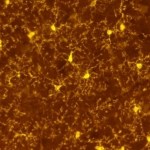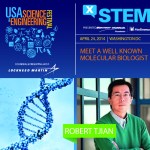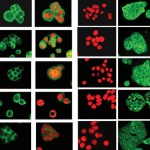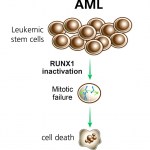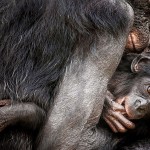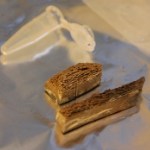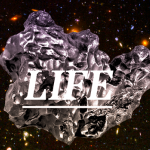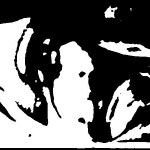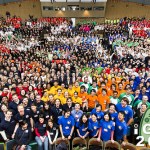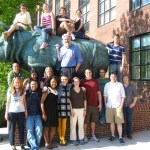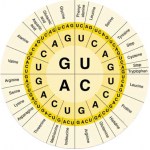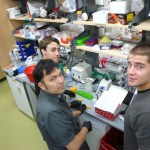DNA
More science-themed haikus. I seem to keep writing them because we tend to put out three “mini press releases” at a time (a relic of the days when they were printed on two sides of a fold-up page and mailed). So I could pick just one to blog about, or I could try to fit all three into one post (which tends to get muddled when it is on subjects as varied as physics, neurobiology and genetics). Or else I can leave these little breadcrumbs inviting you to follow them back to our website, where the fuller explanation awaits (or, from there, you can follow the links in the releases to get to the…
X-STEM - presented by Northrop Grumman Foundation and MedImmune - is an Extreme STEM symposium for elementary through high school students featuring interactive presentations by an exclusive group of visionaries who aim to empower and inspire kids about careers in science, technology, engineering and mathematics (STEM). These top STEM role models and industry leaders are sure to ignite your students’ curiosity through storytelling and live demonstrations.
Our spotlight on our X-STEM Speakers continues with Biochemist Dr. Robert Tjian from Howard Hughes…
On Pharyngula, PZ Myers says that cancer, unlike an infectious bacterium or virus, is not the product of millions of years of evolution. Instead, PZ writes, “Cancer misuses and perverts existing processes in your cells to send them out of control.” But what causes cancer? Well, it happens about 20,000 times a day in your body. Luckily, it is almost always repaired. It is the mutation of DNA during cell division. Just one base out of place, and suddenly the gene that made a protein to tightly regulate cell division is making a protein that encourages the cell to divide continually.…
Cancer, we are told, is a disease of the genes. It originates in mutations in the DNA. But a paper published by a Weizmann Institute group in Cell Reports flips that idea sideways by about 90 degrees: For at least some types of the disease, the healthy, non-mutated version of a gene is no less of a driving force behind the development of cancer than its mutated form.
Prof. Yoram Groner, who led the research, describes the situation as a “balance of terror.” Until now, researchers have assumed that, when a mutation causes cancer it becomes dominant in the cell, overriding the second copy of…
Image of bonobos from www.freewallpaperspot.com
Photographer Graham McGeorge has captured remarkable images of bonobos, our closest living relative that share 98.7% of human DNA. The photos depict bonobos engaging in similar behaviors as humans, like the image above from another photographer of bonobos embracing each other. McGeorge also captured images of bonobos caring for their young as well as a bonobo who lost his hair with advancing age. Truly a must-see!
Click here to view images from this touching display.
Bone fragments used for sequencing the ancient horse genome. Image credit: LUDOVIC ORLANDO as published in The Scientist.
Researchers have successfully created a draft sequence of the complete genome of a 700,000 year old horse from a bone fragment extracted from permafrost in the Yukon Territory (Canada). This is the oldest specimen ever sequenced by almost 10-fold. Prior sequencing of the whole genome from a hominid from Siberia who lived 80,000 years ago was the prior record holder.
It is amazing to me that they were able to recover the entire genome from such an old specimen! These…
It's been a long time, been a long time, been a long lonely, lonely, lonely, lonely time.
Besides indulging my taste for shamelessly working lyrics from Led Zeppelin and other classic bands into my post, what am I talking about? Simple. Things have been way too serious lately. I mean, just look at yesterday's post. Sure, I framed it semi-humorously, with The Evil Skeptics infiltrating the screening of the Burzynski sequel, but part of the reason that I did that is because the subject matter is so unrelentingly depressing. That's why when a reader sent me a link to the victim target subject of…
Well, screwed up transition to WordPress or not, I think it's time to get back to the business of doing what Orac does best: Laying down the Insolence, Respectful and Not-So-Respectful. While the remaining bugs are being ironed out, I'll work on trying to get the blog's appearance back to the way I like it as I harass the Seed/NatGeo overlords to fix things up for the benefit of you, my readers. (Well, it's also to my benefit, too. Using WordPress the way it's configured now is a real PITA, if you know what I mean.) I thought about wandering over to that despicable den of antivaccine iniquity…
The Book of Exogenesis: In the beginning was the word, and the word was a meteorite...
Earlier this month, a report, based on NASA studies of meteorites found on Earth, suggested that some building blocks of DNA may have been formed in space.
As it turns out, DNA components have been found on meteorites before, but it's never been entirely clear if the space rocks came to Earth bearing these molecules, or if they were contaminated upon arrival. Furthermore, this recent study of meteorites was the first to discover trace amounts of three molecules -- purine, 2,6-diaminopurine, and 6,8-…
Last month I wrote about my friend Devin Burrill's paper about synthetic memory in yeast cells. There were a lot of really interesting questions left in the comments, and I asked Devin if she would write a guest post to answer them. She agreed and here it is, answers to your questions straight from the author!
Hello Readers!
My name is Devin, and I am so incredibly grateful to Christina for allowing me to write an entry on her awesome blog. Christina and I are friends and work together in the lab of Pamela Silver at Harvard Medical School. I am writing in response to a number of excellent…
Today's Weizmann Institute news stories include two new papers from the prolific lab of Prof. Yadin Dudai. The first is on a protein that boosts memory in rats. Dudai and his group have been investigating this protein for several years. Previously, they had managed to show that blocking the protein, even for a very short time, erases memories. Now, they have demonstrated that adding more of the protein to certain areas of the brain can strengthen memory. Note: They increased the protein via gene-carrying viruses that infiltrated the rats' brain cells - not a clinic-ready technique. But until…
I'm tired.
Well, not exactly. I think I'm just suffering a case of what I like to call "anti-vax burnout." It's been a busy couple of weeks on the antivaccine front, given the new set of revelations about Andrew Wakefield, including even more detail about the nature of the scientific fraud he committed and previously untold information regarding just how extensive his business plans were to profit from the MMR scare that his fraudulent science was instrumental in launching in the U.K. Regular readers know that, from time to time, when the news about the anti-vaccine movement is coming fast…
It's been a few weeks since the iGEM jamboree, a whirlwind, completely exhausting weekend of student synthetic biology projects. This tweet from Robin Sloan from the #igem2010 stream is a pretty good way to sum up the weekend:
.bbpBox987719207489536 {background:url(http://a3.twimg.com/profile_background_images/3386569/giant2.jpg) #777f88;padding:20px;} p.bbpTweet{background:#fff;padding:10px 12px 10px 12px;margin:0;min-height:48px;color:#000;font-size:18px !important;line-height:22px;-moz-border-radius:5px;-webkit-border-radius:5px} p.bbpTweet span.metadata{display:block;width:100%;clear:…
Mammalian cells need something to hold on to before they can stick to each other and form tissues. The plastic dishes that cells grow on in the lab need to be first coated with special chemicals that grab the cells and convince them to stick. Once the first batch of cells is down they start forming their own matrix of proteins and fibers that can grab new cells as they are formed, slowly creating a dense layer of cells. Tissue engineering aims to make three dimensional, biodegradable scaffolds that cultured cells can grow on to form body parts, like the ear-shaped bit of cow cartilage that…
Thanks to the internet, you can find out your pirate name and your Jersey Shore name, and now thanks to the EMBL-EBI learning tools, you can find your protein name too!
When you type your name into the box, the program reads the letters of your name as if they were the single-letter codes for amino acids. Since there are only 20 amino acids, if you have a B, J, O, U, X, or Z in your name the program reads it as "X" which just means any amino acid could go in that spot.
The amino acids are then translated back into one of the possible three-letter DNA codes for each amino acid, and that DNA…
A recent survey of 3,000 people worldwide found what many have known all along--that Legos are the best toy ever made. For synthetic biologists, this doesn't come as much of a surprise--Legos are at the heart of the concepts underlying the basics of synthetic biology.
Legos are a favorite analogy for BioBricks, the DNA parts that are made to easily "snap" together using a shared genetic engineering strategy. The iGEM competition is structured around BioBricks, with undergraduate teams combining old and creating new BioBricks for the Registry of Standard Biological Parts, competing for the…
It turns out that my wonderful iGEM students, besides being brilliant scientists, are also excellent, hilarious actors. Please enjoy their Jersey Shore inspired video about molecular cloning:
Our lab has a new paper coming out this week in the Journal of Molecular Biology (JMB):
The Glutamate Effect on DNA Binding by Pol I DNA Polymerases: Osmotic Stress and the Effective Reversal of Salt Linkage
I'm going to talk about a few highlights here, but if you actually want the full article, say so in the comments or email me directly and I'll send you a reprint, because unless you or your university has a subscription to the Journal of Molecular Biology, you'll only be able to see the abstract.
The paper comes primarily from the Ph.D. dissertation of Daniel Deredge and osmotic stress…
There is one month to go to submit to the 2010 "Dance Your Ph.D" Contest! Entries are due by September 1st. My lab previously won in the Professor category, so I get to be one of the judges for the 2010 contest. This is our dance from the 2009 contest:
And what we won was: a real dance! Jenn Liang Chaboud, a real choreographer in Chicago, created a dance based on one of our lab's publications in JBC, here is the dance she created:
This is Science: Jenn Liang Chaboud from Red Velvet Swing on Vimeo.
The two muscular guys are Klenow and Klentaq DNA polymerases, the women are all DNA.
THIS…
The first (and sometimes 3rd, 12th, 25th, 134th...) step of any genetic engineering experiment is often extracting DNA from some organism or another. While novel gene synthesis technology will likely make this procedure obsolete, these days it's still most economical to do it by hand. Extracting DNA from fruits like strawberries has also seen a popular resurgence thanks to groups like DIYbio, with instructions for making DNA shots available online for a fun and nerdy party activity. Today my iGEM team extracted RNA from strawberries and oranges to isolate the genes responsible for strawberry…
